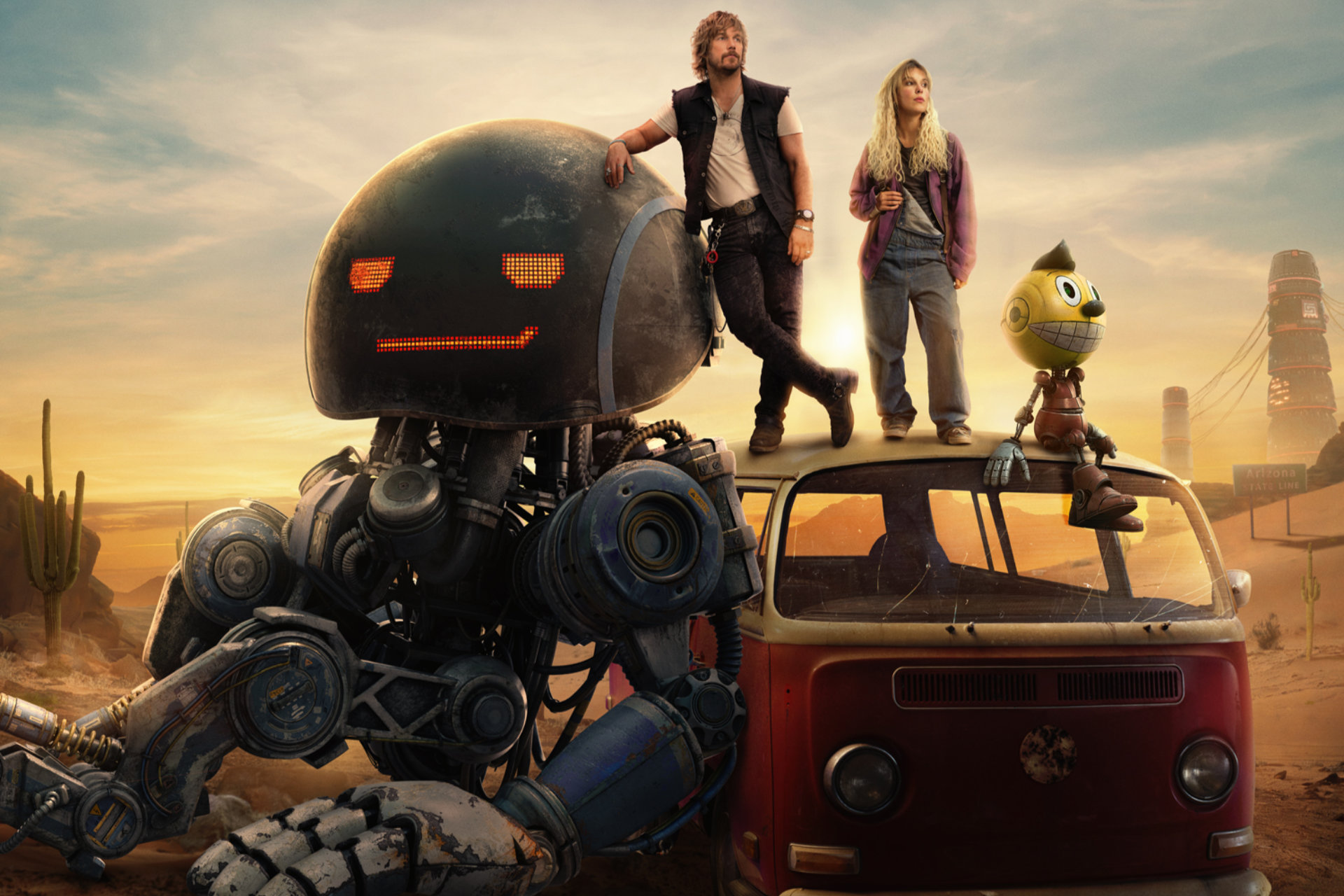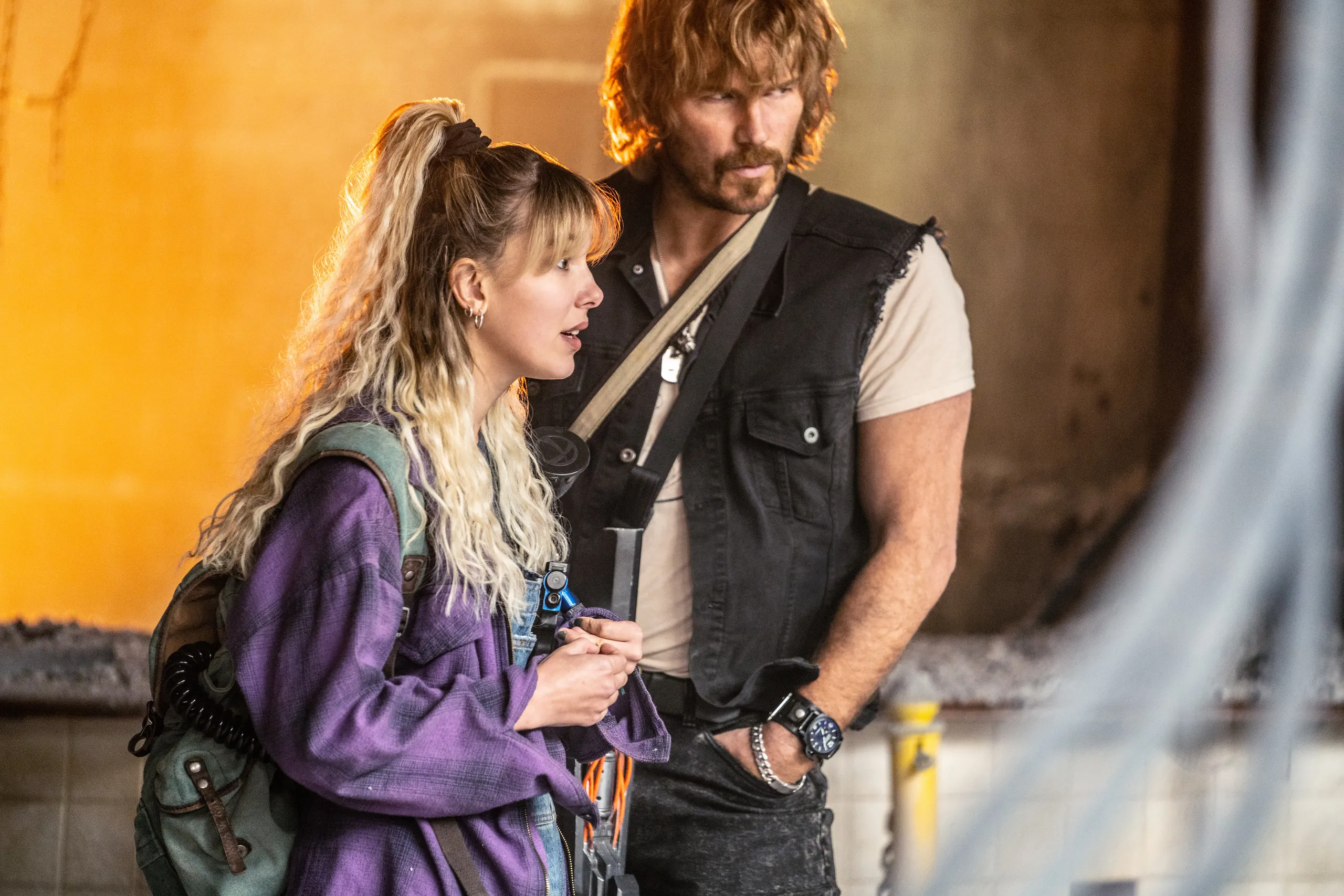The Electric State Book & Movie Explained | Themes, Plot & Visual Art
In a world where dystopian fiction dominates both screens and bookshelves, The Electric State stands out as a hauntingly beautiful and richly imagined journey through a crumbling America. Originally a visual narrative novel by Swedish artist Simon Stålenhag, this story has recently captivated mainstream attention with its upcoming film adaptation. But what makes The Electric State more than just another post-apocalyptic tale? In this article, we’ll explore the book, the themes, the world-building, and what to expect from the cinematic adaptation. Buckle up for an electrifying exploration into one of the most visually stunning and emotionally complex dystopias of the 21st century.
What Is The Electric State?

The Electric State is a narrative art book published in 2017 by Simon Stålenhag, blending vivid retro-futuristic illustrations with a gripping, minimalistic story. Set in an alternate version of 1997, the book follows a teenage girl named Michelle and her toy robot Skip as they traverse the western United States. The pair is on a personal mission, moving through a landscape haunted by the wreckage of a failed virtual reality empire.
This isn’t your typical end-of-the-world scenario. Instead of zombies or nukes, the collapse in The Electric State is eerily subtle and deeply psychological. Massive drone corpses and decaying VR headsets litter the terrain. Human society hasn’t been obliterated—it has disintegrated under the weight of technological addiction and societal detachment.
The Man Behind the Vision: Simon Stålenhag
Simon Stålenhag is a digital artist and storyteller known for blending naturalistic landscapes with eerie sci-fi elements. His signature style often features kids riding bikes past rusting robots, massive machines blending into quiet forests, or strange anomalies in otherwise mundane settings.
Prior to The Electric State, Stålenhag gained popularity with Tales from the Loop and Things from the Flood. However, The Electric State marked a darker turn in tone—one that explores grief, isolation, and the societal consequences of unchecked technological advancement.
Setting the Scene: An Alternate 1997 America

The world of The Electric State is grounded in a retro-futuristic version of the United States. Imagine 1990s America, but instead of the dot-com boom and beepers, there are towering monoliths, abandoned highways, and malfunctioning drones lying dormant across the landscape.
What makes this setting so compelling is how familiar yet foreign it feels. There’s no need for exposition-heavy world-building. Through Michelle’s journey and Stålenhag’s illustrations, the reader pieces together a hauntingly plausible dystopia shaped not by external forces, but by society’s own hand.
The Storyline: A Personal Journey Through a Decaying World
At the heart of The Electric State is Michelle’s emotional quest. She’s not trying to save the world or battle an oppressive government. Her mission is quiet, deeply personal, and tragically human. She is trying to reach the coast—and more importantly, confront the loss of her brother, who fell victim to the virtual reality cult that consumed much of the population.
Michelle’s relationship with Skip, her loyal robot companion, adds emotional depth. Despite being a machine, Skip becomes her only companion—an echo of lost humanity in a world that’s all but forgotten what it means to be human.
Themes Explored in The Electric State
1. Technological Addiction
The primary critique in The Electric State centers around society’s obsession with VR headsets, known as “Neuros.” These devices allow people to escape into a dream world, eventually leading to mass disconnection from reality. It’s a clear allegory for social media, gaming, and digital escapism—making it more relevant today than ever.
2. Grief and Mental Health
Michelle’s entire journey is framed around loss. The collapse of the world mirrors her internal struggles. Her interactions with other survivors—some completely immersed in their virtual illusions—highlight the psychological toll of trauma.
3. The Death of Community
Unlike many dystopian stories that depict rebellion or unity in hardship, The Electric State presents a fractured society. People have turned inward, abandoned their neighbors, and chosen digital fantasies over real connection.
4. Nature vs. Technology
Stålenhag’s artwork contrasts beautiful, vast landscapes with decaying tech. This duality underscores a message: nature continues while humanity crumbles under its own technological ambition.
The Visual Storytelling: A Masterpiece in Art and Atmosphere
One of the most striking features of The Electric State is its illustrated format. Every few pages, the prose gives way to a jaw-dropping digital painting. These images do more than illustrate the story—they enhance the atmosphere and provide critical context with minimal exposition.
The artwork fuses analog aesthetics with futuristic decay. Old-school motels sit beside half-buried battle drones. There’s a stark beauty to the desolation, making the reader feel both awe and dread in equal measure.
From Page to Screen: The Upcoming Movie Adaptation
Fans of the book have been eagerly awaiting the film version of The Electric State, which is currently in production by the Russo Brothers (famous for Avengers: Endgame) with Millie Bobby Brown in the lead role as Michelle. The film promises to retain the emotional weight and visual scale of the original, with a cast that includes Chris Pratt, Stanley Tucci, and Brian Cox.
With a budget rumored to be in the hundreds of millions and the involvement of top-tier creatives, the adaptation could become a defining sci-fi film of the decade. Early production stills and concept art suggest a faithful recreation of Stålenhag’s haunting vision.
How The Electric State Stands Out Among Dystopian Stories
Let’s face it—dystopian fiction is everywhere. But The Electric State breaks the mold in several key ways:
-
It’s deeply personal.
There are no grand revolutions or political intrigue. The story is about one girl and her grief, which makes it intimate and relatable. -
The visuals tell half the story.
This isn’t just a novel—it’s a multimedia experience. The art invites the reader to pause, reflect, and absorb the story emotionally. -
It avoids clichés.
There’s no evil AI overlord or killer virus. The world ends not with a bang, but with quiet decay.
The Electric State and Our Modern World: A Warning?
Though set in an alternate past, The Electric State feels eerily prescient. With the rise of AI, metaverses, and digital escapism, the book serves as a chilling warning. What happens when we prioritize virtual lives over real ones? When we stop engaging with the physical world?
It also reflects on the mental health crisis, especially among younger generations who feel more alone and overwhelmed despite being more “connected” than ever. Michelle’s silent suffering becomes a mirror to many real-life struggles.
Where to Start: Book or Movie?

If you’re wondering whether to read the book or wait for the film—do both. The book offers a richer emotional experience, especially with Stålenhag’s immersive art. But the movie, with its A-list cast and big-budget visuals, will likely expand the world and bring new life to the story.
For fans of visual storytelling, concept art, and quiet, thought-provoking narratives, the book is a must-have. For those who enjoy sci-fi films with emotional depth, the movie might become your next favorite.
Conclusion: A Haunting Vision That Sparks Reflection
The Electric State isn’t just a dystopian novel—it’s an experience. A journey through a world ruined not by war, but by our own obsession with digital escape. With its breathtaking visuals, profound themes, and haunting atmosphere, it challenges us to ask:
What happens when reality is no longer enough?
In a time where technology continues to evolve faster than our ethics, The Electric State becomes not just a story—but a warning. It’s a reminder to stay grounded, connected, and human.
Whether you’re a sci-fi enthusiast, a visual art lover, or someone seeking stories that linger long after the last page, The Electric State delivers something truly unforgettable.


Leave a Reply